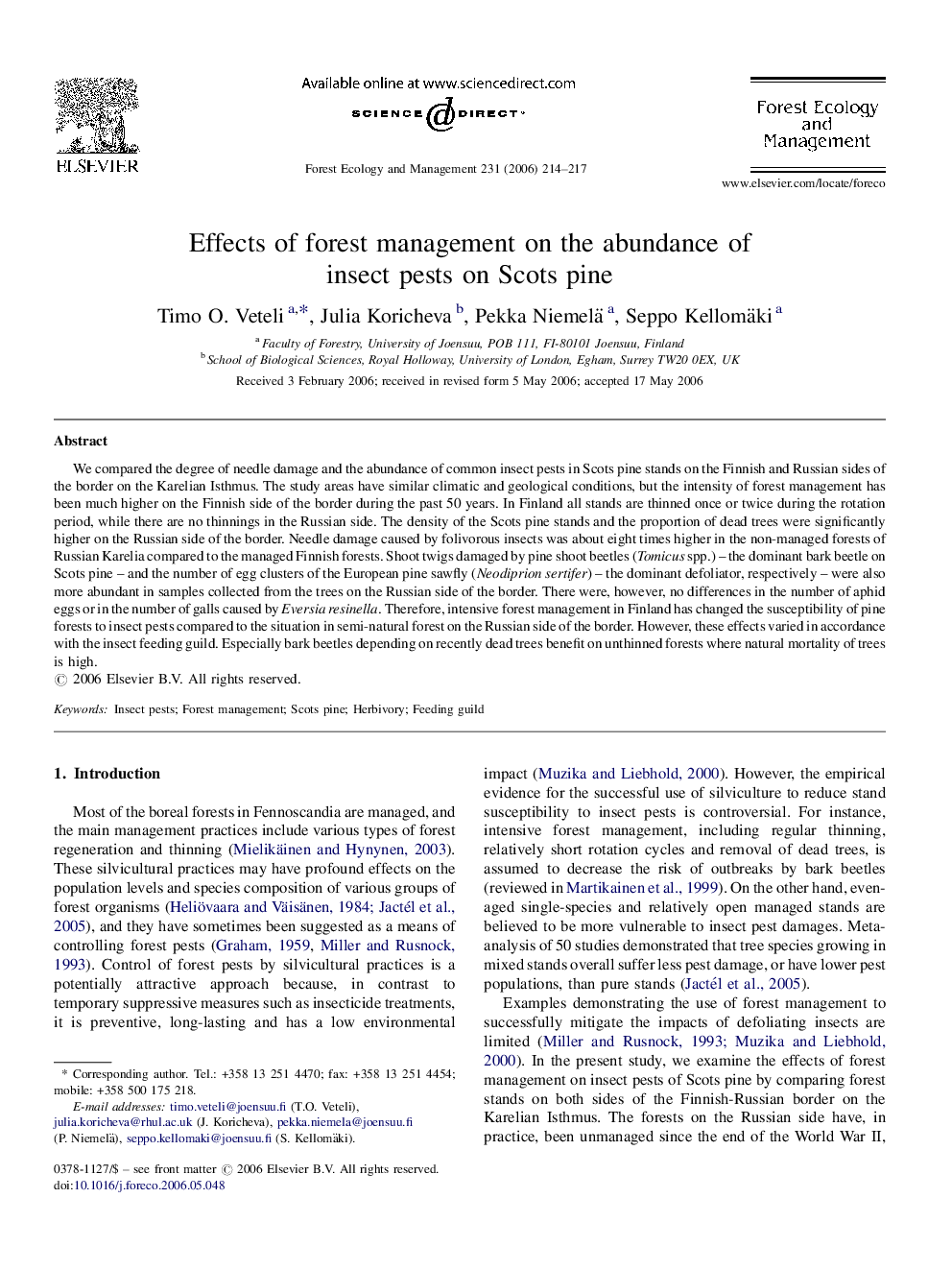| کد مقاله | کد نشریه | سال انتشار | مقاله انگلیسی | نسخه تمام متن |
|---|---|---|---|---|
| 90882 | 159406 | 2006 | 4 صفحه PDF | دانلود رایگان |

We compared the degree of needle damage and the abundance of common insect pests in Scots pine stands on the Finnish and Russian sides of the border on the Karelian Isthmus. The study areas have similar climatic and geological conditions, but the intensity of forest management has been much higher on the Finnish side of the border during the past 50 years. In Finland all stands are thinned once or twice during the rotation period, while there are no thinnings in the Russian side. The density of the Scots pine stands and the proportion of dead trees were significantly higher on the Russian side of the border. Needle damage caused by folivorous insects was about eight times higher in the non-managed forests of Russian Karelia compared to the managed Finnish forests. Shoot twigs damaged by pine shoot beetles (Tomicus spp.) – the dominant bark beetle on Scots pine – and the number of egg clusters of the European pine sawfly (Neodiprion sertifer) – the dominant defoliator, respectively – were also more abundant in samples collected from the trees on the Russian side of the border. There were, however, no differences in the number of aphid eggs or in the number of galls caused by Eversia resinella. Therefore, intensive forest management in Finland has changed the susceptibility of pine forests to insect pests compared to the situation in semi-natural forest on the Russian side of the border. However, these effects varied in accordance with the insect feeding guild. Especially bark beetles depending on recently dead trees benefit on unthinned forests where natural mortality of trees is high.
Journal: Forest Ecology and Management - Volume 231, Issues 1–3, 1 August 2006, Pages 214–217